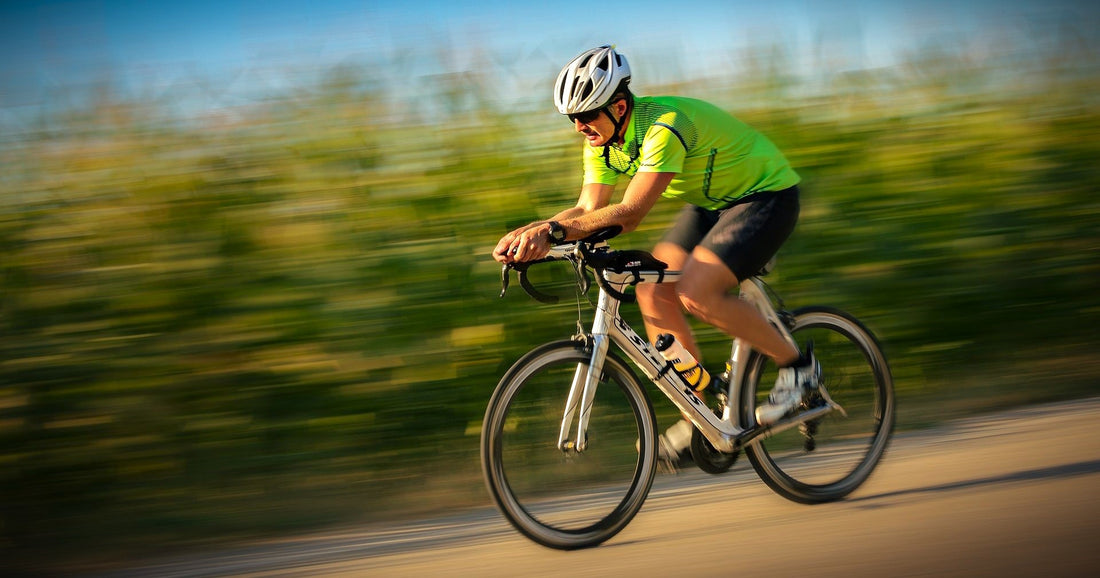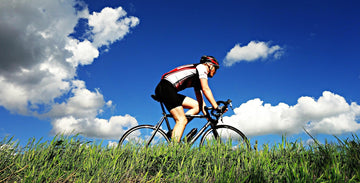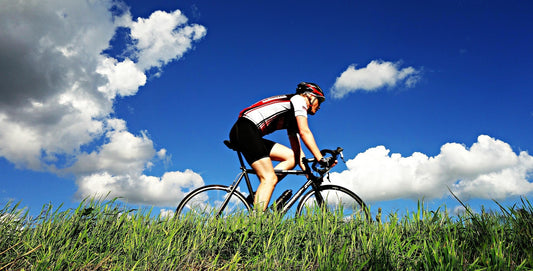Cycling for Weight Loss - Pedal Your Way to a Leaner You
Are you tired of the same old boring workouts that yield little to no results? It's time to switch things up and hop on a bike!
Cycling is not only a fun and exhilarating way to get around, but it is also a highly effective form of exercise for weight loss.
Cycling for weight loss is not only achievable, but it can also be an enjoyable journey filled with breathtaking views and invigorating rides.
In this guide, we will dive deep into the world of cycling, exploring the numerous health benefits it offers, the best practices for calorie burning, and the essential tips and tricks to maximize your weight loss potential.
Whether you're a seasoned cyclist or just starting out, this guide will equip you with the knowledge and motivation to achieve your weight loss goals.
So fasten your helmet and get ready to pedal your way to a leaner, healthier you.
The Benefits of Cycling for Weight Loss
Cycling offers a multitude of benefits for those looking to shed some pounds.
First and foremost, it is a low-impact exercise that puts less stress on your joints compared to activities like running or HIIT workouts. This makes it an excellent option for individuals with joint pain or injuries.
Additionally, cycling is a great cardiovascular exercise that gets your heart pumping and improves your lung capacity. Regular cycling can also help lower your blood pressure and reduce your risk of heart disease.
But the benefits of cycling for weight loss go beyond just cardiovascular health. It is a full-body workout that engages multiple muscle groups, including your legs, core, and upper body.
As you pedal, you are not only burning calories but also toning and strengthening your muscles. This, in turn, increases your metabolism, helping you burn more calories even when you're not on the bike.
How Cycling Helps Burn Calories
One of the key reasons why cycling is such an effective weight loss exercise is its calorie-burning potential. The number of calories burned during a cycling workout depends on various factors, including your weight, intensity, and duration of the ride.
On average, a person weighing around 68 kilograms can burn approximately 400-600 calories per hour of moderate cycling.
To maximize your calorie burn, it's important to vary the intensity of your rides. Incorporating interval training, where you alternate between high-intensity bursts and recovery periods, can significantly increase the number of calories you burn.
Hill climbs are also an excellent way to challenge your body and torch calories.
By incorporating these techniques into your cycling routine, you can turn your bike rides into fat-burning sessions.
Setting Realistic Weight Loss Goals through Cycling
When it comes to weight loss, setting realistic goals is crucial for long-term success. The same applies to cycling. Instead of focusing solely on the number on the scale, consider setting goals related to your cycling performance and overall fitness.
For example, aim to increase your average speed or complete a longer distance within a specific time frame. By focusing on performance goals, you'll stay motivated and see improvements in your cycling abilities which will naturally translate into weight loss.
It's also important to remember that weight loss is not a linear process. Your body may go through plateaus or fluctuations, and that's completely normal.
By setting realistic goals and tracking your progress, you'll be able to see the bigger picture and stay motivated even during times when the scale doesn't budge.
The Importance of Proper Nutrition for Cycling and Weight Loss
While cycling alone can burn a significant number of calories, it's important to pair your workouts with proper nutrition to support weight loss. Fueling your body with the right nutrients will not only optimize your performance on the bike but also aid in recovery and muscle development.
Start by focusing on whole, unprocessed foods that are rich in nutrients. Incorporate a balance of carbohydrates, lean protein, and healthy fats into your meals to provide your body with the energy it needs.
Opt for complex carbohydrates like whole grains and fruits, which will provide sustained energy throughout your rides. Lean proteins such as chicken, fish, and tofu will help repair and build muscles, while healthy fats like avocados and nuts will keep you satiated and support brain function.
Moreover, hydration is key when it comes to cycling and weight loss. Drink plenty of water before, during, and after your rides to stay hydrated and aid in digestion. Avoid sugary drinks and opt for water or electrolyte-rich beverages to replenish lost minerals.
Designing an Effective Cycling Workout Plan
To make the most of your cycling workouts and achieve your weight loss goals, it's essential to have a well-designed workout plan. A good cycling workout plan should include a mix of endurance rides, interval training, and strength-building exercises.
Endurance rides are the foundation of your cycling training. These longer, steady-paced rides help build your aerobic capacity and improve your overall fitness. Aim for at least one or two endurance rides per week, gradually increasing the duration and intensity over time.
Interval training is an excellent way to boost your calorie burn and improve your cycling performance. Incorporate short bursts of high-intensity efforts followed by recovery periods.
For example, sprint for 30 seconds, then recover for one minute. Repeat this cycle for a total of 10-15 minutes. Gradually increase the duration and intensity of your intervals for maximum benefit.
Strength-building exercises off the bike are also important for weight loss and overall fitness. Incorporate exercises like squats, lunges, and core workouts to strengthen your muscles and improve your cycling efficiency.
Remember to include rest days in your workout plan to allow your body to recover and prevent overtraining.
Choosing the Right Bike for Weight Loss
Choosing the right bike for weight loss can make a significant difference in your cycling experience. There are various types of bikes available, each with its own advantages and considerations.
If you're primarily focused on road cycling, a lightweight and aerodynamic road bike would be your best bet. These bikes are designed for speed and efficiency, allowing you to cover longer distances with ease. Road bikes typically have drop handlebars and thin tires, providing a more aggressive riding position.
If you prefer off-road adventures, a mountain bike or a hybrid bike might be more suitable. Mountain bikes are built to withstand rough terrains and offer more stability and control. Hybrid bikes, on the other hand, are a combination of road and mountain bikes, making them versatile for both on-road and off-road cycling.
When choosing a bike, it's important to consider factors such as your fitness level, terrain, and personal preferences.
Visit a local bike shop to get expert advice and test ride different models to find the perfect fit for your weight loss journey.
Tips for Staying Motivated While Cycling for Weight Loss
Staying motivated is crucial when it comes to any fitness journey, and cycling for weight loss is no exception. Here are some tips to keep you motivated and excited about your rides:
- Set specific and achievable goals: Whether it's completing a challenging route or participating in a cycling event, having a goal in mind will give you something to work towards.
- Join a cycling group or find a riding buddy: Cycling with others not only makes your rides more enjoyable but also provides accountability and support.
- Mix up your routes: Exploring new routes and scenic trails can keep your rides exciting and prevent boredom.
- Track your progress: Use a fitness app or a cycling computer to track your distance, speed, and calories burned. Seeing your progress can be a great motivator.
- Reward yourself: Treat yourself to a new piece of cycling gear or a massage after reaching a milestone. Celebrating your achievements will keep you motivated and excited for future rides.
Remember, staying consistent is key. Even on days when you don't feel like cycling, a short ride is better than no ride at all. The more you cycle, the more you'll fall in love with it and the closer you'll get to your weight loss goals.
Safety Tips for Cycling on the Road
Cycling on the road requires extra caution and awareness to ensure your safety. Here are some safety tips to keep in mind:
- Always wear a helmet: A helmet is your best defense against head injuries. Make sure it fits properly and is securely fastened.
- Follow traffic rules: Obey traffic signals, stop signs, and road markings. Signal your turns and always ride in the same direction as traffic.
- Be visible: Wear bright-colored clothing and use lights or reflectors, especially when riding in low-light conditions.
- Be aware of your surroundings: Stay alert and watch out for pedestrians, vehicles, and other cyclists. Avoid distractions like headphones or phone use.
- Plan your route: Choose roads with designated bike lanes or low traffic volume. Familiarize yourself with the route in advance to avoid unexpected hazards.
- Stay vigilant at intersections: Intersections are high-risk areas for accidents. Slow down, make eye contact with drivers, and always assume that they might not see you.
- Maintain your bike: Regularly check your brakes, tires, and gears to ensure they are in good working condition. A well-maintained bike is safer and more reliable.
- Ride defensively: Anticipate potential hazards and give yourself enough time to react. Be prepared to yield or take evasive actions if needed.
By following these safety tips and being mindful of the road conditions, you can enjoy your cycling workouts while prioritizing your safety.
Tracking Progress and Measuring Success in Your Weight Loss Journey
Tracking your progress is essential to measure your success and make adjustments to your weight loss strategy. Here are some ways to track your progress:
- Keep a workout journal: Record your rides, noting the distance, duration, and perceived effort. This will help you see improvements over time.
- Use a fitness app or a cycling computer: These devices can track various metrics such as distance, speed, calories burned and even heart rate. They provide a comprehensive overview of your rides and allow you to set specific goals.
- Take body measurements: Besides relying solely on the scale, take measurements of your waist, hips, and other body parts. As you build muscle and lose fat, these measurements can provide a more accurate representation of your progress.
- Regularly assess your fitness level: Monitor your endurance, speed, and strength. As you become fitter, you'll notice improvements in these areas, indicating progress in your weight loss journey.
Remember that weight loss is a gradual process, and everyone's journey is unique. Focus on the positive changes in your fitness and overall well-being, rather than solely relying on the numbers.
Let’s Sum Up
Cycling offers a sustainable and enjoyable approach to weight loss. Not only does it burn calories and promote fat loss, but it also improves your cardiovascular health, strengthens your muscles, and boosts your mood.
By incorporating cycling into your fitness routine and following the tips and strategies outlined in this guide, you can pedal your way to a leaner, healthier you.
So fasten your helmet, hop on your bike, and embrace the freedom and joy that comes with cycling.
Whether you're exploring new trails, challenging yourself with steep climbs, or simply enjoying a leisurely ride, remember that every pedal stroke brings you closer to your weight loss goals.
So go ahead, pedal your way to a leaner you and discover the incredible transformation that awaits you on two wheels.
Happy & healthy cycling!





